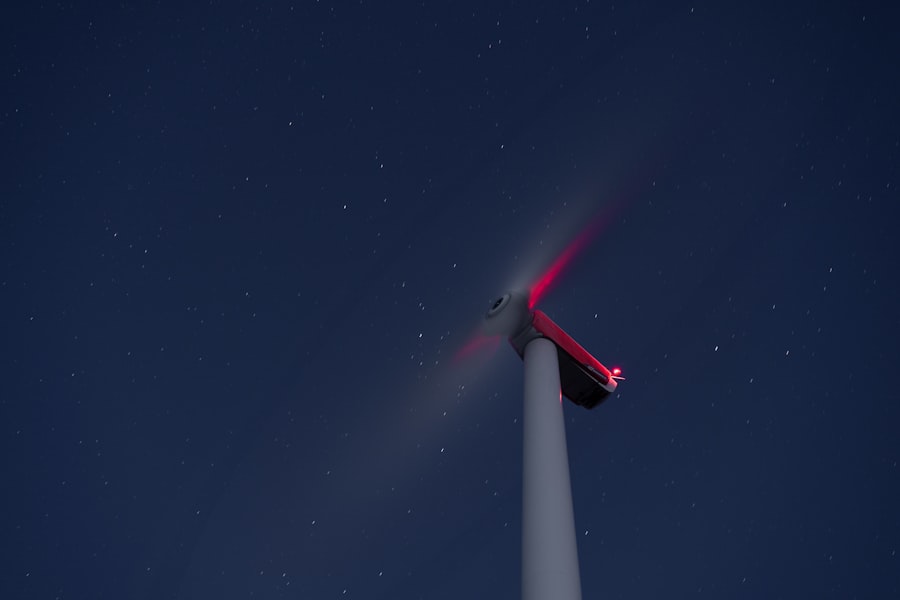A pole shift refers to a significant and often rapid change in the orientation of the Earth’s rotational axis or its magnetic field. This phenomenon can manifest in two primary forms: a geographic pole shift, where the physical locations of the North and South Poles change, and a magnetic pole shift, which involves a reversal of the Earth’s magnetic field. While geographic shifts are typically gradual, magnetic pole reversals can occur over thousands of years, leading to periods of instability in the Earth’s magnetic field.
The implications of such shifts are profound, affecting not only the planet’s geology but also its climate and ecosystems. The concept of pole shifts has intrigued scientists and laypeople alike for centuries. The idea that the Earth’s poles could move or even flip has sparked numerous theories and debates.
While some view these shifts as catastrophic events, others argue that they are natural processes that have occurred throughout Earth’s history. Understanding pole shifts is crucial for comprehending the dynamic nature of our planet and its long-term changes.
Key Takeaways
- Pole shift refers to a change in the Earth’s axis, leading to a repositioning of the geographic poles.
- Historical evidence, such as changes in ancient civilizations and geological records, supports the occurrence of pole shifts.
- Causes of pole shifts include natural processes like mantle convection, as well as external factors like asteroid impacts.
- Effects of pole shifts on Earth include climate changes, altered wildlife migration patterns, and disruptions to ecosystems.
- Predictions and theories about future pole shifts suggest potential impacts on global weather patterns and human societies.
Historical Evidence of Pole Shifts
Historical evidence of pole shifts can be traced back through geological records, which reveal patterns of magnetic reversals over millions of years. The study of paleomagnetism, which examines the magnetic properties of rocks, has provided insights into past pole positions and movements. For instance, scientists have identified numerous instances of geomagnetic reversals, with the last major reversal, known as the Brunhes-Matuyama reversal, occurring approximately 780,000 years ago.
These geological records serve as a testament to the Earth’s ever-changing magnetic field. In addition to geological evidence, ancient civilizations have left behind records that suggest awareness of pole shifts. For example, some indigenous cultures have myths and legends that describe dramatic changes in the Earth’s landscape and climate, which may correlate with past pole shifts.
Archaeological findings also indicate that certain ancient structures were aligned with celestial bodies in ways that suggest an understanding of the Earth’s orientation. This historical context enriches the narrative surrounding pole shifts, illustrating that humanity has long grappled with the implications of such profound changes.
Causes of Pole Shifts

The causes of pole shifts are complex and multifaceted, involving both internal and external factors. Internally, the movement of molten iron within the Earth’s outer core generates the planet’s magnetic field. Changes in this flow can lead to fluctuations in magnetic polarity, resulting in a magnetic pole shift.
Additionally, tectonic activity can contribute to geographic pole shifts by redistributing mass on the Earth’s surface, which can alter the planet’s rotation. Externally, factors such as gravitational interactions with other celestial bodies can influence the Earth’s axis. For instance, the gravitational pull from the Moon and Sun affects tidal forces that can lead to slight variations in the Earth’s tilt over time.
Furthermore, large-scale events like asteroid impacts or volcanic eruptions can also disrupt the balance of forces acting on the Earth, potentially triggering a shift in its poles. Understanding these causes is essential for predicting future shifts and their potential consequences.
Effects of Pole Shifts on Earth
| Effects of Pole Shifts on Earth |
|---|
| 1. Changes in Climate Patterns |
| 2. Disruption of Animal Migration |
| 3. Altered Magnetic Field |
| 4. Potential Increase in Earthquakes and Volcanic Activity |
| 5. Impact on Navigation Systems |
The effects of pole shifts on Earth can be both immediate and long-term, impacting various aspects of life on the planet. One significant consequence is the alteration of climate patterns. As the poles shift, regions that were once temperate may experience drastic changes in temperature and precipitation, leading to altered ecosystems and habitats.
This can result in challenges for agriculture and water resources, affecting food security for human populations. Moreover, pole shifts can influence ocean currents and atmospheric circulation patterns. These changes can lead to extreme weather events, such as hurricanes or droughts, which can devastate communities and ecosystems alike.
The potential for increased seismic activity during a pole shift also poses risks, as tectonic plates may become more unstable. Overall, the ramifications of pole shifts are far-reaching, necessitating a comprehensive understanding of their potential impacts on Earth.
Predictions and Theories about Future Pole Shifts
Predictions regarding future pole shifts are often speculative but grounded in scientific research. Some scientists suggest that we may be due for another magnetic reversal based on historical patterns observed in geological records. While these reversals typically occur over thousands of years, there is concern about how quickly such changes could happen in the current geological epoch.
The unpredictability of these events adds an element of uncertainty to climate models and environmental planning. Various theories have emerged regarding how a future pole shift might unfold. Some researchers propose that a gradual shift could occur over millennia, allowing ecosystems and human societies to adapt relatively smoothly.
Others warn that a rapid shift could lead to catastrophic consequences, including widespread ecological collapse and societal upheaval. These differing perspectives highlight the need for ongoing research into pole shifts and their potential implications for humanity.
How Pole Shifts Impact Climate Change

Pole shifts have significant implications for climate change, as they can alter global weather patterns and temperature distributions. When the poles move, regions that were once cold may become warmer, while areas closer to the equator may experience cooling effects. This redistribution of heat can disrupt established climate zones, leading to unpredictable weather patterns and increased frequency of extreme weather events.
Additionally, as polar ice caps melt due to shifting temperatures, sea levels may rise significantly, threatening coastal communities worldwide. The loss of ice also contributes to further warming through a feedback loop known as albedo effect; as ice melts, darker ocean waters absorb more sunlight, exacerbating climate change. Understanding how pole shifts interact with climate dynamics is crucial for developing effective strategies to mitigate their impacts on both natural ecosystems and human societies.
The Role of Magnetic Fields in Pole Shifts
Magnetic fields play a pivotal role in pole shifts, particularly during magnetic reversals when the Earth’s magnetic field undergoes significant changes. The magnetic field acts as a protective shield against solar radiation and cosmic rays; thus, when it weakens or fluctuates during a reversal, increased levels of radiation can reach the Earth’s surface. This exposure poses risks not only to human health but also to technological systems reliant on stable magnetic conditions.
Furthermore, fluctuations in magnetic fields can disrupt navigation systems used by both wildlife and humans. Many species rely on Earth’s magnetic field for migration and orientation; disruptions could lead to disorientation or even extinction for some species. Understanding the intricate relationship between magnetic fields and pole shifts is essential for predicting how these phenomena will affect life on Earth.
How Pole Shifts Affect Wildlife and Ecosystems
The impact of pole shifts on wildlife and ecosystems is profound and multifaceted. As habitats change due to shifting climates and altered landscapes, many species may struggle to adapt or migrate to new areas that meet their needs for survival. For instance, polar bears depend on sea ice for hunting seals; if ice melts rapidly due to climate changes associated with a pole shift, their populations could decline dramatically.
Ecosystems are interconnected webs of life; thus, changes affecting one species can have cascading effects throughout an entire ecosystem. For example, if migratory birds are unable to navigate effectively due to disruptions in Earth’s magnetic field during a pole shift, it could lead to declines in plant pollination or seed dispersal—further destabilizing local ecosystems. Understanding these dynamics is crucial for conservation efforts aimed at preserving biodiversity amid changing environmental conditions.
Human Adaptation to Pole Shifts
Human adaptation to pole shifts involves both resilience-building measures and proactive planning strategies. Communities must develop an understanding of potential risks associated with shifting poles—such as extreme weather events or changes in agricultural viability—and implement measures to mitigate these risks. This may include investing in infrastructure designed to withstand severe weather or developing new agricultural practices suited for changing climates.
Education plays a vital role in fostering awareness about pole shifts among populations at risk. By informing communities about historical precedents and potential future scenarios, individuals can better prepare themselves for possible disruptions caused by these phenomena.
Preparing for a Pole Shift: What You Can Do
Preparing for a potential pole shift involves both individual actions and community initiatives aimed at enhancing resilience against environmental changes. Individuals can start by educating themselves about the science behind pole shifts and their potential impacts on local ecosystems and communities. This knowledge empowers people to make informed decisions regarding resource management and disaster preparedness.
On a community level, local governments should prioritize infrastructure improvements that account for potential climate-related challenges posed by pole shifts—such as flooding or extreme weather events—by investing in sustainable practices like green building designs or flood defenses. Additionally, fostering community networks focused on sharing resources during emergencies can enhance collective resilience against disruptions caused by shifting poles.
The Importance of Studying and Understanding Pole Shifts
Studying and understanding pole shifts is crucial not only for scientific inquiry but also for practical applications in environmental management and disaster preparedness. By examining historical data on past shifts—both geographic and magnetic—scientists can develop models that predict future occurrences and their potential impacts on Earth’s systems. Moreover, understanding pole shifts fosters greater awareness among policymakers about long-term environmental changes that may affect human societies globally.
This knowledge is essential for developing adaptive strategies aimed at mitigating risks associated with climate change while promoting sustainable practices that protect biodiversity and ecosystem health. Ultimately, continued research into pole shifts will enhance humanity’s ability to navigate an ever-changing planet while safeguarding future generations from unforeseen challenges.
To gain a deeper understanding of the pole shift phenomenon, it’s beneficial to explore various scientific perspectives and theories. One such resource is an article available on Freaky Science, which delves into the intricacies of geomagnetic reversals and their potential impacts on Earth. This article provides valuable insights into the historical patterns of pole shifts and the scientific methods used to study them. For more detailed information, you can read the full article by visiting Freaky Science.
WATCH THIS 🌍 Earth’s Magnetic Field Is About To Flip: The Crisis You Need to Know
FAQs
What is a pole shift?
A pole shift is a phenomenon where the Earth’s axis of rotation moves and the geographic locations of the North and South poles change.
What causes a pole shift?
There are two types of pole shifts: geomagnetic pole shifts and true polar wander. Geomagnetic pole shifts are caused by changes in the Earth’s magnetic field, while true polar wander is caused by changes in the Earth’s rotation.
How often do pole shifts occur?
Pole shifts are rare events and occur over long periods of time. Geomagnetic pole shifts can occur every few hundred thousand years, while true polar wander can occur over millions of years.
What are the potential effects of a pole shift?
A pole shift could have significant effects on the Earth’s climate, weather patterns, and ecosystems. It could also impact navigation systems and communication networks.
Is a pole shift imminent?
There is currently no scientific evidence to suggest that a pole shift is imminent. While the Earth’s magnetic field has been weakening, it is not expected to result in a sudden pole shift.
